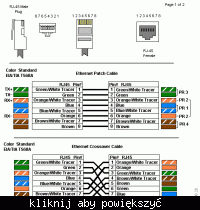Hello,
I admit that I have not dealt with building a network, but I have a question.
I have patched the network cable to connect the modem-router according to the colors in the following order:
white-orange
orange
white-blue
blue
white-green
green
white-brown
brown
On both sides the plug was tight and the network did not work (no net, no automatic ip).
By changing the order on both sides to:
white-orange
orange
white-green
blue
white-blue
green
white-brown
brown
Everything is OK...
The malice of inanimate things, what is it?
I admit that I have not dealt with building a network, but I have a question.
I have patched the network cable to connect the modem-router according to the colors in the following order:
white-orange
orange
white-blue
blue
white-green
green
white-brown
brown
On both sides the plug was tight and the network did not work (no net, no automatic ip).
By changing the order on both sides to:
white-orange
orange
white-green
blue
white-blue
green
white-brown
brown
Everything is OK...
The malice of inanimate things, what is it?



